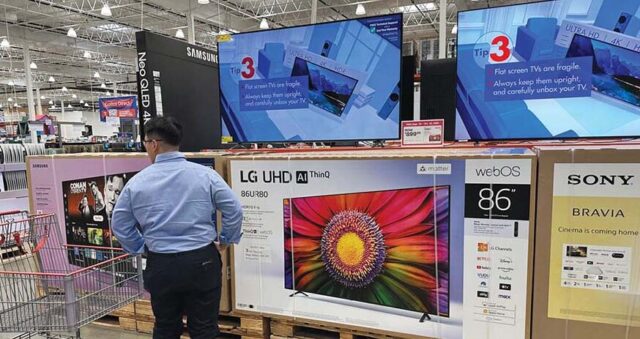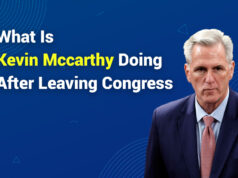Mixed Signals in May’s Inflation and Consumer Spending
The latest report from the Commerce Department has shown that the personal consumption expenditures (PCE) price index has continued to rise, exacerbating concerns over inflation which has remained above the Federal Reserve’s target of 2% annually. As of May, the PCE index increased by 2.3% compared to the same month last year, up from 2.1% in April. When stripping out the often-volatile food and energy categories, core prices climbed by 2.7%, a slight uptick from the 2.5% recorded in April.
Impact of Tariffs on Pricing
Despite the ongoing inflationary trend, prices across the U.S. have not demonstrated substantial changes attributed directly to the tariffs imposed by the Trump administration on various imports. Federal Reserve Chair Jerome Powell has warned that the overall inflation rate could rise sharply during the summer months as the effects of these tariffs seep into consumer prices.
In another development, consumer spending saw a decrease of 0.1% in May, marking the first decline since January. This shift has raised eyebrows, particularly in light of the preceding months where Americans increased spending ahead of the tariffs taking effect. Economists suggest this pullback is likely a correction following earlier splurges.
Economic Insights
- Consumer spending: A minor drop was documented last month, after a period of increased purchase behaviors prompted by looming tariffs.
- Income adjustments: A noted reduction in incomes stemmed from a temporary boost in Social Security payments in prior months.
According to Greg Wilensky, head of U.S. fixed income at Janus Henderson, despite the slight dip in spending being below forecasts, it should not provoke excessive concern. He suggests that it largely represents a natural adjustment after the considerable purchases made earlier this year.
Inflation Trends and Corporate Reactions
The current inflation dynamics indicate that the inflationary pressures from the tariffs have so far yielded only a modest impact on consumers. While some categories, such as toys and sporting goods, have seen price increases, these have largely been balanced by lower costs in other areas like new cars and airline fares.
In monthly terms, the overall inflation rate rose by just 0.1% from April to May, mirroring the previous month’s increase. Core prices saw a slightly sharper rise of 0.2%, exceeding economic projections. Analysts have noted that the lack of significant inflation can be attributed to several factors, including the strategic advance purchasing by companies and consumers before tariffs and some businesses absorbing the heightened import costs to mitigate consumer price hikes.
Expert Analysis
Carl Weinberg, chief economist at High Frequency Economics, noted in a research briefing that there is currently nothing alarming regarding inflation levels as per the recent report. However, he highlighted the unexpected decline in consumer expenditure as a significant concern, being the first occurrence since the pandemic began. This aspect is likely to be factored into the Federal Reserve’s evaluations moving forward.
Inflation and Consumer Spending Overview
| Metric | May 2025 | April 2025 |
|---|---|---|
| PCE Index (YoY) | 2.3% | 2.1% |
| Core Prices (YoY) | 2.7% | 2.5% |
| Consumer Spending Change | -0.1% | N/A |
| Inflation Rate Change (MoM) | 0.1% | 0.1% |
As economic conditions continue to evolve, all eyes will be on how these trends develop and impact both consumers and the broader market.














